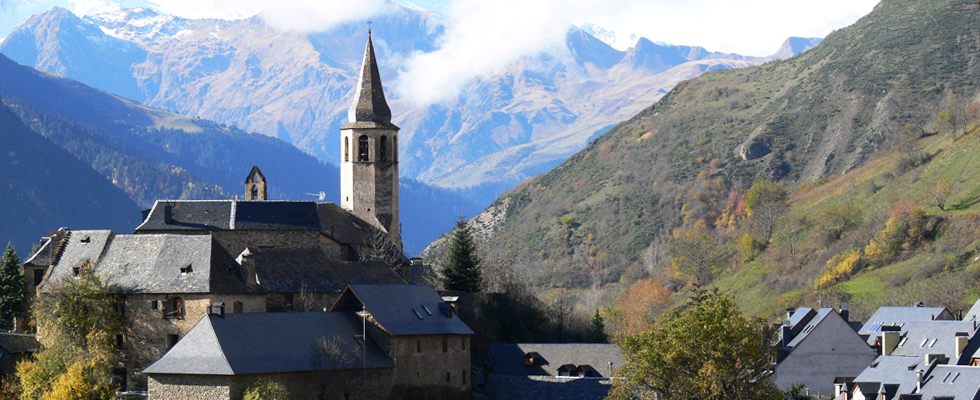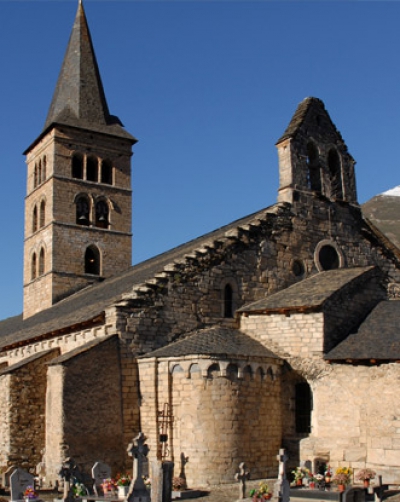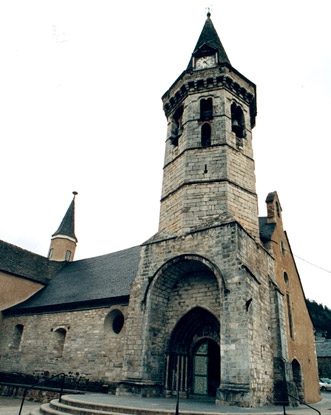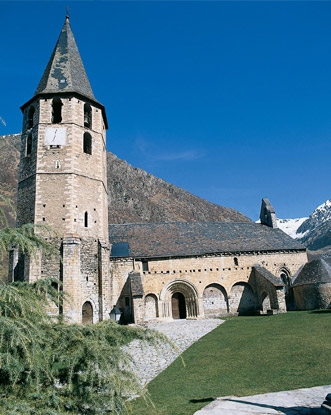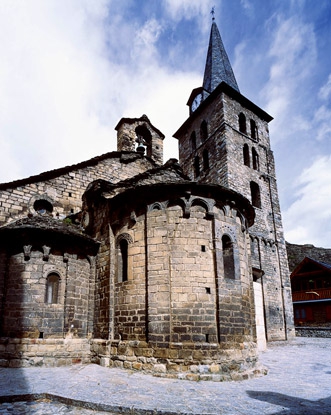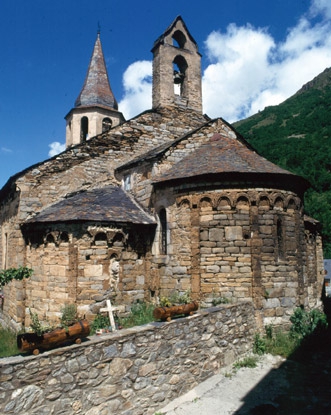The spectacular mountain scenery and Aranese heritage have lived for centuries sharing the culture and traditions of the Val d’Aran. Each of the 33 villages of the Aran has its church and some of them are real treasures, jewelry, both in architecture and sculptural paintings or found in the interior, an artistic legacy of great variety and exceptional wealth .
The heritage area Culture Department Conselh Generau d’Aran offers us the opportunity to discover the characteristics of Romanesque architecture of the valley during the summer organizing guided tours of fifteen of the most significant churches visits. Most of these churches were built between the twelfth and thirteenth centuries, generally Romanesque valley is characterized to be an evolved Romanesque even late, even though some churches remain part of Lombard Romanesque, with cut with a rich iconography doors. All this heritage, held in common a rich sculptural ornamentation, and a bell that is immediately identified with the Aranese villages.
The fifteen churches in the Romanesque route of Aran are interesting but there are five absolutely essential visits:
Santa Maria de Arties, declared National Monument, we can see inside interesting Gothic and Renaissance wall paintings, we must also highlight the altarpiece, a masterpiece of Gothic painting, with paintings depicting various scenes with the Virgin Mary.
Sant Andreu de Salardú, its architecture is typical of late Romanesque XIII century, inside it surprised us a stylish gothic architectural structure and the wall paintings of the seventeenth century where several personalities and biblical instantiations are represented. In the central apse is a sculpture of Christ of Salardu, dating from the twelfth century, is a work of Erill la Vall workshop.
Sta. Eulalia de Unha, kept inside, on the hemisphere of the central apse, Romanesque paintings showing which must have been the Pantocrator, which face is preserved. You can also see paintings of the sixteenth century, in which biblical episodes develop. They are also very interesting the two baptismal spades. The bell tower of Sta. Eulalia was added in the eighteenth century.
Practical information for the Romanesque Route
Churches open all year:
St. Miquèu of Vielha, Bossòst was Purificacion, St. Andreu de Salardú and St. Joan and St. Blas Les. Opening hours from 10.00 to 20.00 hours. During summer Vilamòs and Bagergue.
From July 13 to September 13 a fixed opening hours with guided tours at 11.00 and 13.00 h 12.00 set visits. and at 17.00, 18.00 and 19.00 h. from Monday to Saturday.
For more information and schedules, contact the tourist offices of the Val d’Aran.









